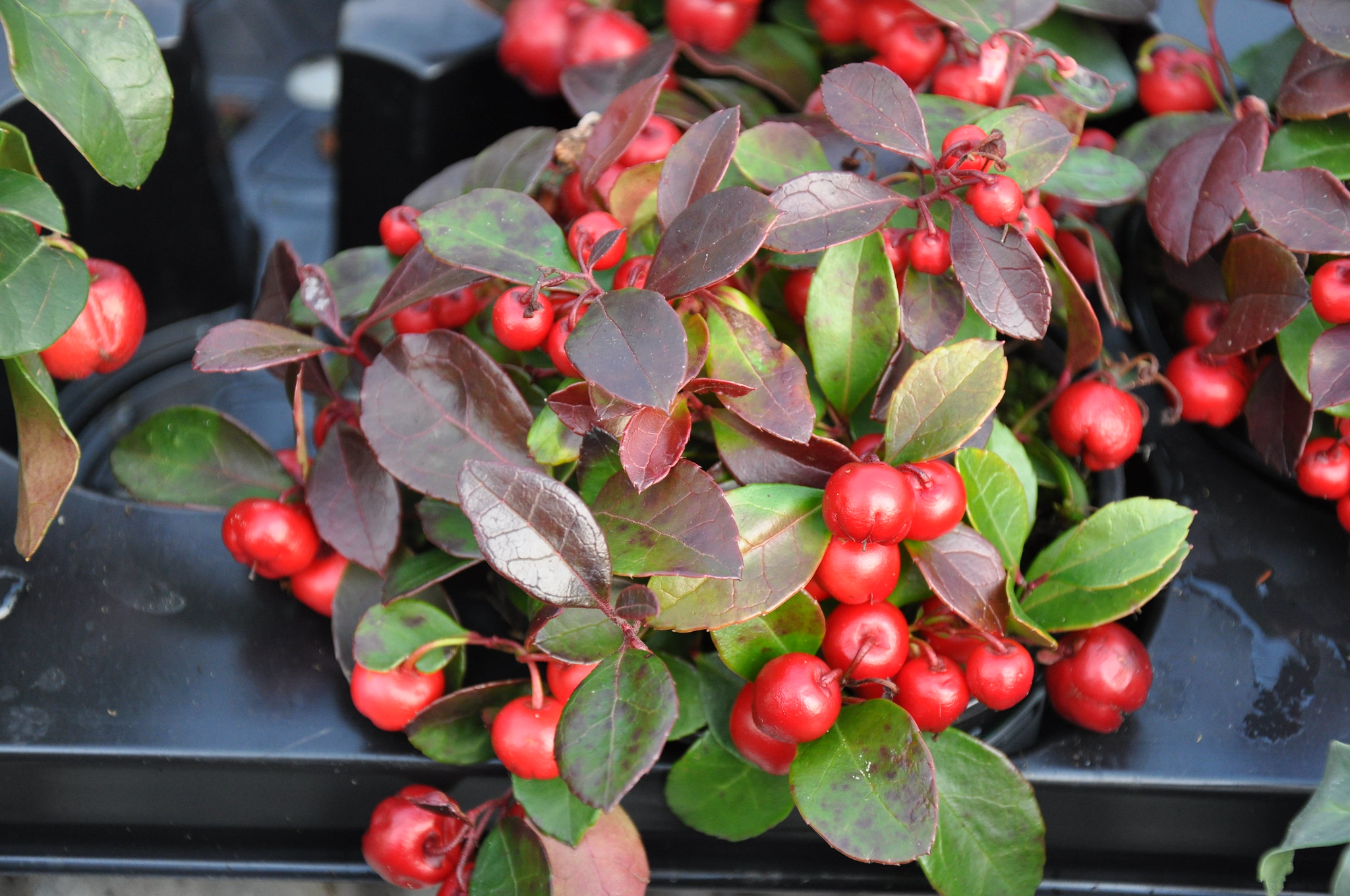Eastern Teaberry is a type of understory plant that’s under the blueberry family. It thrives in light to moderately shady hardwood forests. Teaberry plants prefer acidic soils. These plants grow well in moist, organically enriched soil and clay, but it prefers moist, well-drained soil.
It’s an excellent groundcover for the shadier areas of your yard, and it can even go as far as tolerating even the most intense of shade. Should you want to grow this plant, be sure to grow it in a rock garden, along a foundation, or in a woody garden.
A wintergreen scent is generated when the leaves of the teaberry plant are crushed. These plants can be planted ten to fourteen inches apart, but they will continue to spread and form a much denser carpet if you do not space them properly. Expect that a variety of small animals and birds will feed on the spherical fleshy crimson seed capsules.
Is Teaberry Poisonous?
No, teaberry is not poisonous, and the fruit of the plant can be eaten.
The fruits can be eaten raw or cooked. The fruit is far from bland; it has a solid spicy Germolene flavor that reminds one of being in a hospital or clinic. Expect teaberry fruits to hang on until spring if the birds don’t get to them first. Wait until after frost before picking teaberries. You may use teaberries to make preserves or pies. Teaberry fruits have a diameter of up to 15mm.
The young leaves should be eaten uncooked.
If you eat it when the berries are pretty young, it can be a tasty wayside snack. Our taste buds describe it as dry and powdery. Fresh teaberry leaves are used to make a delicious tea. The bright red leaves of the plant can be fermented first to make a stronger tea if you like that. This plant can be used to make ‘wintergreen oil.’ Beer, chocolates, and chewing gum can all be made with it.
What Can I Do with Tea Berries?
Teaberry plants can be found practically everywhere in New England, peaking in mid-October. If you’ve ever gone for a walk in the woods anywhere in New England, you’ve probably come upon or passed by teaberry plants.
You might remember searching for and harvesting the mildly flavored berries that bloom on the tiny groundcover plants if you’re from New England. Teaberries were commercially harvested to make actual teaberry chewing gums. Teaberry chewing gum was one of the earliest chewing gums marketed in the United States, around 1900. Teaberries have also been used as a flavor for candies, herbal treatments, tea, and even wine for millennia.
The teaberry plant features small, rounded, semi-shiny leaves with tiny bell-shaped white flowers that grow into red berries with a pinkish tint. The berries are pea-sized and shaped, but they are stiffer than most and have a mealy texture. They have a faint yet aromatic scent. It has quite the understated berry flavor but presents a warm mint undertone that is more noticeable than what you’d expect from something called a berry.
Native North American Indians utilized teaberry leaves to heal aches and pains and aid breathing while hunting or carrying heavy loads. In addition, the leaves yield an essential oil called “oil of wintergreen,” which includes methyl salicylate, a compound linked to aspirin and an efficient anti-inflammatory.
This plant species was once a significant source of methyl salicylate, but that’s now just manufactured or synthesized. It has the following properties: tonic, stimulant, diuretic, carminative, astringent, and the most fragrant smell. These are properties of its essential oil and leaves, and to a lesser degree, the fruits.
External application of the plant, especially if you have access to its distilled oil, can be most effective in treating various conditions, including catarrh, neuralgia, sprains, myalgia, sciatica, and rheumatism.
Cellulitis, a bacterial illness that causes the skin to become itchy and inflamed, is occasionally treated using distilled teaberry oil. However, remember that the teaberry essential oil can be poisonous in excess.
Some caution is always advised when working with herbal medicaments and wildflowers and fruits, most especially if you plan to take or distill oil from any part of the plant and take the resulting oil by mouth. In addition, some patients who may have hypersensitivity to salicylates should avoid using this plant. The leaves can be collected at any time of the year, from spring to early autumn, and are either dried for infusions or distilled to make the oil.
This adaptable and easy-to-grow shrub is becoming increasingly popular in landscapes, especially in New England and other locations where it is native. In addition, the teaberry plant can be perfect for specific gardeners who need or want to cultivate plants that easily blend with the existing landscape.
Once established, the teaberry plant is well-established and thriving; it will need very little irrigation because it stores moisture and thrives best in shaded places. Trailing leaves can also be trained to climb around stakes or garden statuary with ease. Teaberry plants make excellent terrarium plants as well.
What Do Tea Berries Taste Like?
Teaberry has an unusual flavor for those who are unfamiliar with it. The color, a vibrantly joyful shade of pink, immediately conjures images of strawberries or other berries, mainly since the name includes “berry.” However, there is essentially no trace of berry flavor. Instead, teaberry has a sweet, somewhat tangy taste that will remind people of wintergreen.
Many people associate it with classic teaberry gum (Clark’s), popular in the 1960s and 1970s. You’ll adore teaberry if you like wintergreen. Some people compare it to Pepto-Bismol, a prominent brand of medicine used to treat upset stomachs. However, because of teaberry’s potent flavor profile, we believe the best way to eat it is plain – just the fruit and nothing else.
The main picture is from Stefano.

